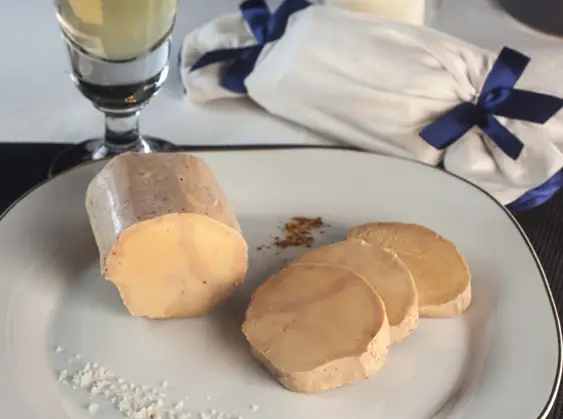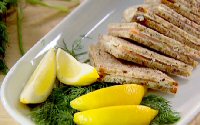1. Introduction: Unveiling the Wonders of Oysters
Oysters have long been regarded as a delicacy and a symbol of luxury. However, their value extends far beyond their taste and status. Oysters hold a wealth of surprising benefits that can have a significant impact on our health and the environment. From their impact on water quality to their nutritional value, oysters are truly a treasure from under the sea. In this blog post, we will explore the many surprising benefits of oysters and the ways in which they can contribute to a healthier and more sustainable future.
2. The Nutritional Powerhouse: Exploring the Health Benefits of Oysters
Oysters are not only delicious, but they also pack a powerful nutritional punch. These shellfish are a rich source of several essential nutrients that can have a positive impact on our overall health. In this section, we will explore the various health benefits of oysters and how they can contribute to a healthier lifestyle.
1. High in Protein: Oysters are an excellent source of protein, which is essential for building and repairing tissues in our body. Protein also plays a crucial role in the production of enzymes, hormones, and antibodies. Including oysters in your diet can help meet your daily protein requirements and support healthy growth and development.

2. Rich in Vitamins and Minerals: Oysters are a good source of vitamins and minerals, including vitamin D, vitamin B12, zinc, iron, and selenium. Vitamin D is necessary for strong bones and immune function, while vitamin B12 is important for nerve function and the production of red blood cells. Zinc is essential for a healthy immune system, while iron helps transport oxygen throughout the body. Selenium acts as an antioxidant, protecting cells from damage.
3. Omega-3 Fatty Acids: Oysters are one of the best natural sources of omega-3 fatty acids, particularly eicosapentaenoic acid (EPA) and docosahexaenoic acid (DHA). These fatty acids are essential for brain health, reducing inflammation, and supporting heart health. Including oysters in your diet can help increase your intake of these beneficial fats and promote overall well-being.
4. Low in Calories and Fat: Oysters are relatively low in calories and fat, making them a healthy option for those watching their weight or looking to maintain a balanced diet. They are a lean source of protein and contain minimal saturated fat. Additionally, the fats present in oysters are mostly healthy unsaturated fats.
5. Boosts Immune System: Oysters contain various nutrients that can support a healthy immune system. The zinc present in oysters helps stimulate the production of immune cells and promotes their proper functioning. Including oysters in your diet can provide a natural boost to your immune system and help defend against illness and infection.
It is important to note that while oysters offer numerous health benefits, they should be consumed as part of a balanced diet. As with any food, moderation is key. Additionally, individuals with specific dietary restrictions or allergies should consult with a healthcare professional before incorporating oysters into their meals.
3. A Taste of Luxury: Oysters as a Culinary Delight
Oysters have long been regarded as a luxurious culinary delight, enjoyed by seafood enthusiasts all over the world. With their unique flavour and texture, oysters offer a taste experience unlike any other. In this section, we will explore the culinary aspects of oysters and why they are considered a gourmet delicacy.
1. Flavour Profile: Oysters have a distinctive and complex flavour profile that can vary depending on their origin. From briny and salty to sweet and buttery, oysters offer a range of flavours that can be appreciated by discerning palates. Each variety of oyster has its own unique characteristics, influenced by factors such as the water they are grown in and the presence of certain minerals. Whether enjoyed raw, grilled, or cooked in various recipes, oysters bring a depth of flavour that is sure to impress.
2. Versatile Culinary Ingredient: Oysters can be prepared and enjoyed in a variety of ways, making them a versatile ingredient in the culinary world. While raw oysters are a popular choice, they can also be grilled, fried, baked, or added to soups, stews, or pasta dishes. Their rich flavour and succulent texture make them a perfect addition to seafood platters, sushi rolls, or even as a standalone appetizer. Whether served as an elegant starter or the centerpiece of a main course, oysters add a touch of sophistication to any meal.
3. Pairing Possibilities: Oysters are known for their ability to pair well with a wide range of flavours and ingredients. From the classic combination of oysters and champagne to the more adventurous pairing with craft beers or premium white wines, there are endless options for pairing oysters with beverages. Additionally, oysters can be complemented by a variety of accompaniments, such as tangy mignonette sauce, zesty citrus flavours, or rich and creamy toppings like caviar or hollandaise sauce. The versatility of oysters allows for endless creativity in the kitchen and the opportunity to create truly memorable dining experiences.
4. Culinary Traditions and Celebrations: Oysters have been an integral part of culinary traditions and celebrations for centuries. From oyster festivals and seafood feasts to special occasions and holidays, oysters hold a special place in the hearts of food enthusiasts. In many cultures, oysters are associated with luxury, abundance, and celebration. They are often served as a delicacy during festive events, symbolizing prosperity and indulgence. Whether enjoyed at a grand banquet or a casual gathering, oysters bring a sense of occasion to any culinary experience.
To ensure the long-term sustainability of oyster aquaculture, responsible farming practices are essential. Oyster farmers adhere to strict regulations and guidelines to minimize environmental impact, employ sustainable harvesting techniques, monitor water quality, and implement responsible waste management practices. By embracing sustainable oyster farming, we can continue to enjoy the benefits of oysters while preserving the health and integrity of our oceans.
 It’s September and there’s an ‘r’ in the months, so the oysters are good. They’ve had all summer to grow and fatten, and now they are truly at their best – fresh and tasting of the sea. Traditionally, in France, oysters are eaten raw and in the shell, freshly delivered from the Atlantic ocean. The best way is to eat them with thin slices of rye bread, salted butter, and lemon juice. Some people add shallot vinegar, and that’s just fine too.
It’s September and there’s an ‘r’ in the months, so the oysters are good. They’ve had all summer to grow and fatten, and now they are truly at their best – fresh and tasting of the sea. Traditionally, in France, oysters are eaten raw and in the shell, freshly delivered from the Atlantic ocean. The best way is to eat them with thin slices of rye bread, salted butter, and lemon juice. Some people add shallot vinegar, and that’s just fine too. My recommendation is to avoid foie gras altogether if you can’t be sure it has been produced artisanally and ethically. If, however, you get to visit an independent producer on your travels, or have a solid recommendation for one from a chef or discerning cook, buy a terrine de foie gras entier mi-cuit (half-cooked) in a jar and savour every bite. We always buy from
My recommendation is to avoid foie gras altogether if you can’t be sure it has been produced artisanally and ethically. If, however, you get to visit an independent producer on your travels, or have a solid recommendation for one from a chef or discerning cook, buy a terrine de foie gras entier mi-cuit (half-cooked) in a jar and savour every bite. We always buy from  Another luxury food item that has been ruined by the consumer’s insistence to eat it any old day of the year, but no willingness to pay the proper price for it, is smoked salmon. The consequence is factory-farmed salmon that are pumped full of drugs and chemicals to make them grow more quickly. They are destroying the environment, and the result is oily smoked salmon with little firm texture, that just tastes of fish and smoke.
Another luxury food item that has been ruined by the consumer’s insistence to eat it any old day of the year, but no willingness to pay the proper price for it, is smoked salmon. The consequence is factory-farmed salmon that are pumped full of drugs and chemicals to make them grow more quickly. They are destroying the environment, and the result is oily smoked salmon with little firm texture, that just tastes of fish and smoke.




